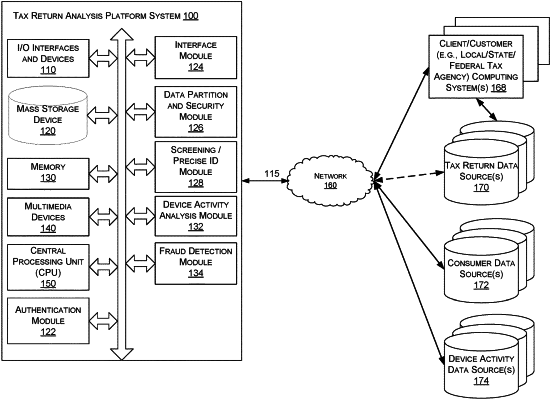| CPC G06Q 20/4016 (2013.01) [G06Q 40/123 (2013.12)] | 20 Claims |

|
1. A system comprising:
a network interface configured to send and receive secure, encrypted electronic messages with a remote tax agency server, the remote tax agency server comprising a first electronic data store configured to store a plurality of tax return data associated with a plurality of consumers and at least one tax agency;
a second electronic data store comprising device activity data records associated with the plurality of consumers; and
a computing device configured to electronically communicate with the remote tax agency server and the second electronic data store, the computing device comprising one or more processors programmed to execute software instructions to cause the system to:
access, from the remote tax agency server, a first tax return data associated with a first tax return associated with a first consumer of the plurality of consumers, the first tax return data comprising one or more consumer attributes associated with the first consumer;
identify the first tax return as a flagged tax return based at least in part on the one or more consumer attributes associated with the first consumer;
access, from the second electronic data store, a first device activity data associated with a consumer computing device associated with the first consumer, the first device activity data indicative of at least one of: whether the consumer computing device has been previously associated with fraudulent activities, a degree of risk associated with the fraudulent activities, or whether the consumer computing device is in a list of devices that are banned from conducting a tax return filing;
analyze the first device activity data; and
based at least in part on the analysis of the first device activity data, generate a fraud score for the first tax return data and request authentication of the consumer computing device associated with the first consumer.
|